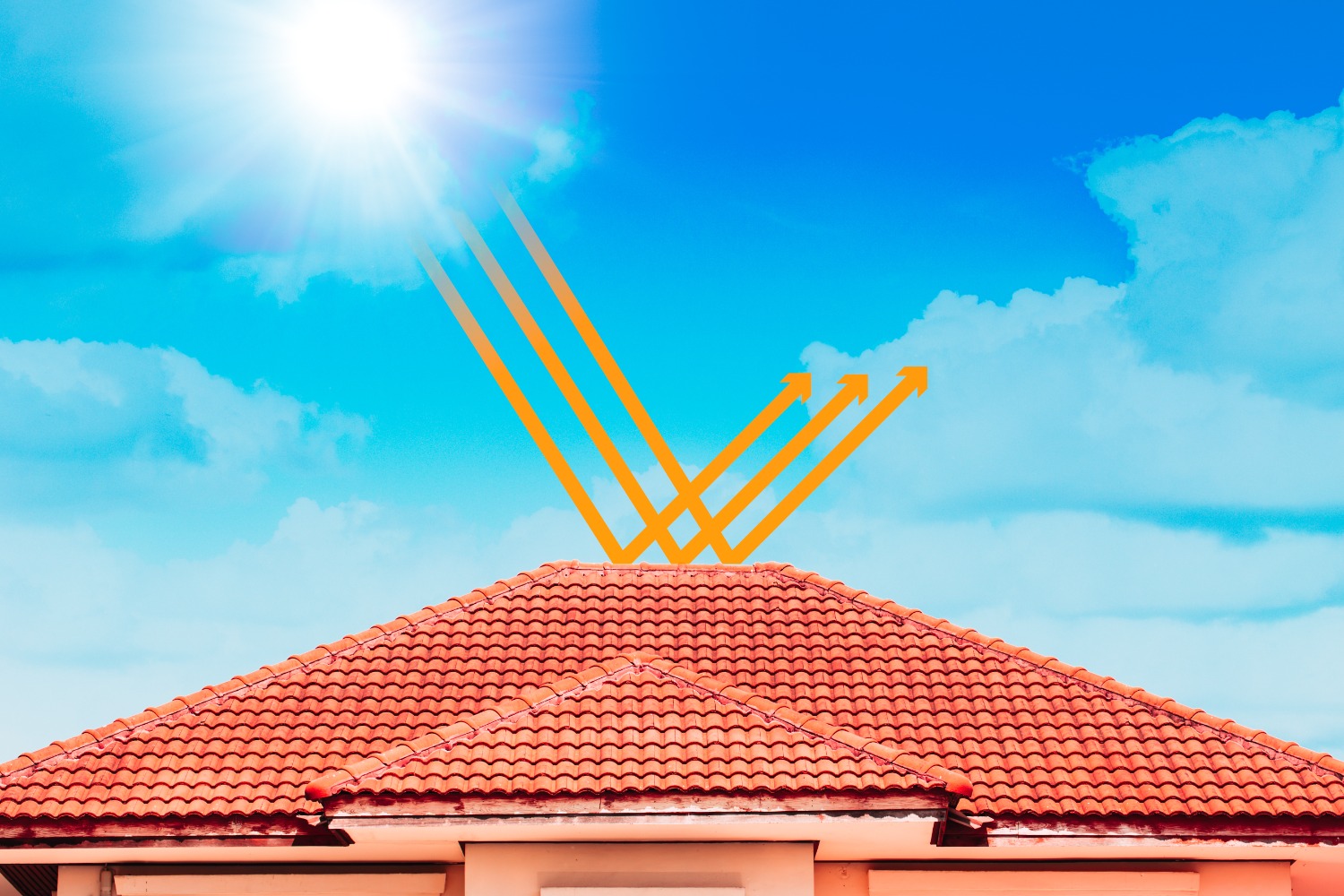April 5, 2025

Cool roofing systems are specially designed to reflect more sunlight and absorb less heat than standard roofing materials, resulting in cooler indoor temperatures, lower energy use, and a reduced environmental footprint. But what exactly do we mean by "cool roof,” and how do these systems work?
Join us as we cover the basics of cool roofs and all the benefits they provide to your home, your wallet, and the environment! Be sure to check out our roofing services in the Salt Lake area for more options on how to upgrade your roof!

The term “cool roof” refers to any roofing system that is engineered to reflect more sunlight and emit absorbed heat more effectively than traditional roofs. This is achieved through the use of highly reflective materials and specialized coatings that lower the roof’s surface temperature, even during the hottest parts of the day. A typical dark roof can reach temperatures of 150°F or more under direct sunlight, while a cool roof under the same conditions may stay closer to 100°F, depending on the materials used and the level of reflectivity.
Cool roofs come in a variety of forms depending on the building type and regional climate. These include white or light-colored membranes, reflective metal panels, and roof coatings that can be applied over existing surfaces. Ultimately, the defining characteristic of a cool roof is its ability to minimize solar heat gain, making it a simple and effective solution to the challenges posed by heat and energy inefficiency.

Cool roofs offer a broad range of benefits that extend beyond individual buildings to entire communities. At the most basic level, they help reduce interior cooling needs, which translates into lower electricity bills, especially during hot summer months. According to the U.S. Department of Energy, buildings with cool roofs can reduce their cooling energy demand significantly depending on the climate, roof type, and insulation levels.

Cool roofs function based on two primary physical properties: solar reflectance and thermal emittance. These characteristics determine how much sunlight the roof reflects and how efficiently it releases absorbed heat. Together, these properties keep the roof surface significantly cooler, which in turn reduces the amount of heat transferred to the interior of the building. This process helps maintain lower indoor temperatures, especially in areas where air conditioning may not be used or is used sparingly.

The Solar Reflectance Index (SRI) is a comprehensive metric used to measure the "coolness" of a roofing material. The SRI combines both solar reflectance and thermal emittance into a single number that indicates how hot a surface is likely to get when exposed to full sunlight. SRI values range from 0 to 100, where higher values indicate a cooler surface.
A standard black roof typically has an SRI of 0, meaning it absorbs and retains heat efficiently. Conversely, a bright white roof can have an SRI as high as 100, making it extremely effective at reflecting solar radiation and releasing heat. The SRI is particularly useful in comparing different materials and helping designers and building owners meet specific energy code requirements or LEED (Leadership in Energy and Environmental Design) certification standards.

The urban heat island (UHI) effect is a phenomenon where densely developed urban areas experience significantly higher temperatures than surrounding rural regions. The temperature difference, often ranging from 2°F to 7°F or more, is largely caused by the abundance of dark, heat-absorbing surfaces like asphalt roads and traditional roofing materials.
Cool roofs are one of the most effective tools available for mitigating the UHI effect. Reflecting more sunlight and staying cooler than conventional roofs help reduce the overall temperature of the urban environment. Studies have shown that widespread adoption of cool roofs in major cities could lower peak urban temperatures by up to 2°F, leading to reduced air conditioning use, fewer heat-related illnesses, and improved air quality.

Creating a cool roof can be approached in several ways, depending on your existing roof type, budget, and energy goals. Whether you're building a new structure or retrofitting an old one, there are practical options to help you enhance your roof’s solar performance.
For larger commercial buildings that emit more heat, white or light-colored TPO, PVC, or EPDM membranes are the most popular option for creating a cool roof, particularly for a flat or low-slope roof. However, there are also ways to make your home’s roof energy efficient and cool.

Before making any decisions, it’s important to assess your area’s climate zone, roof slope, and local regulations. In cooler climates, the benefits of cool roofs may be less dramatic, and heat loss in winter may be a greater concern that negates the need for a cool roof. However, in warm and sunny regions, a cool roof can be one of the most impactful energy upgrades available. Reach out to us here at Integrated Roofing Solutions for the best roofing options to suit your needs in the Salt Lake City area!